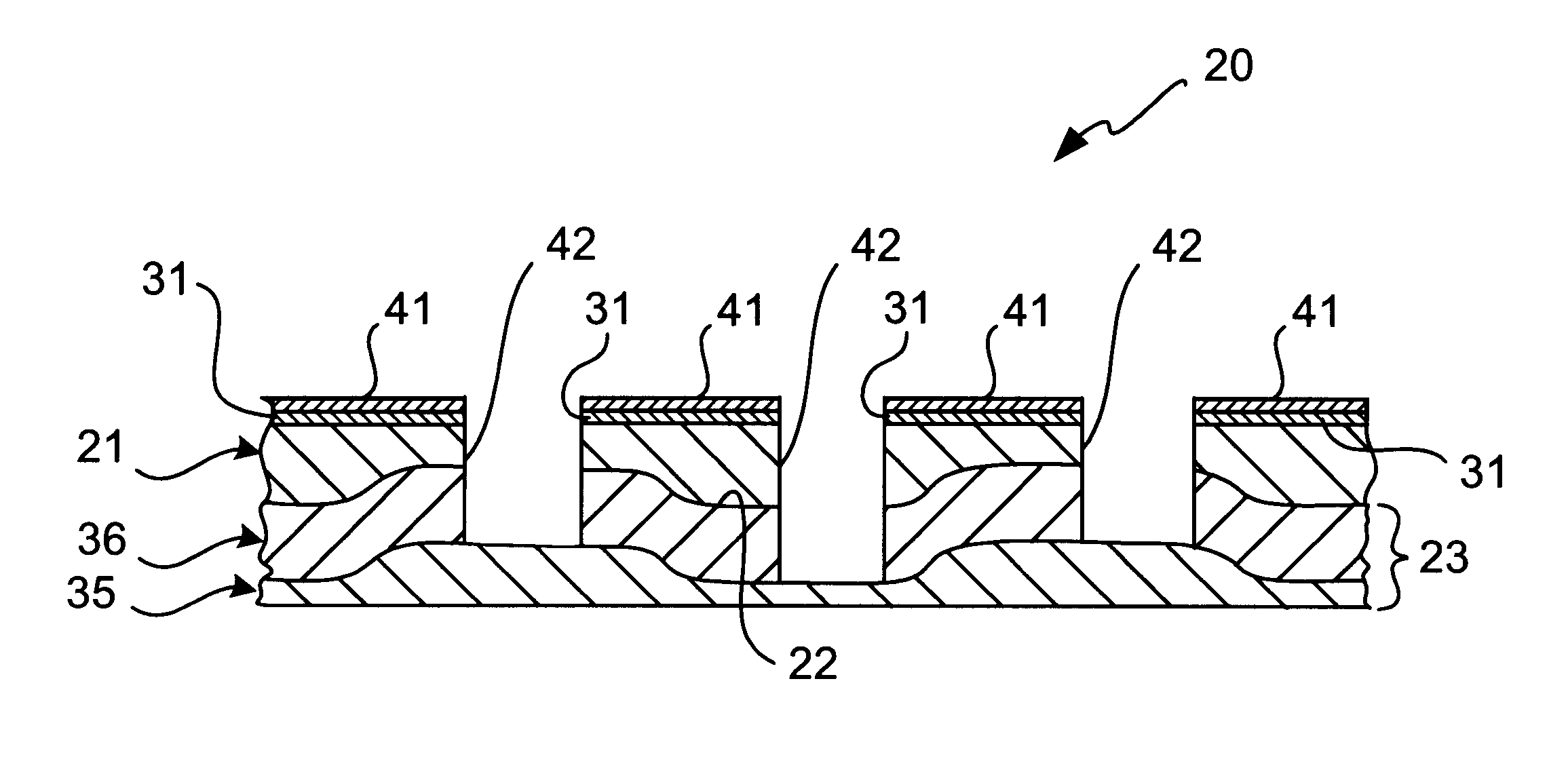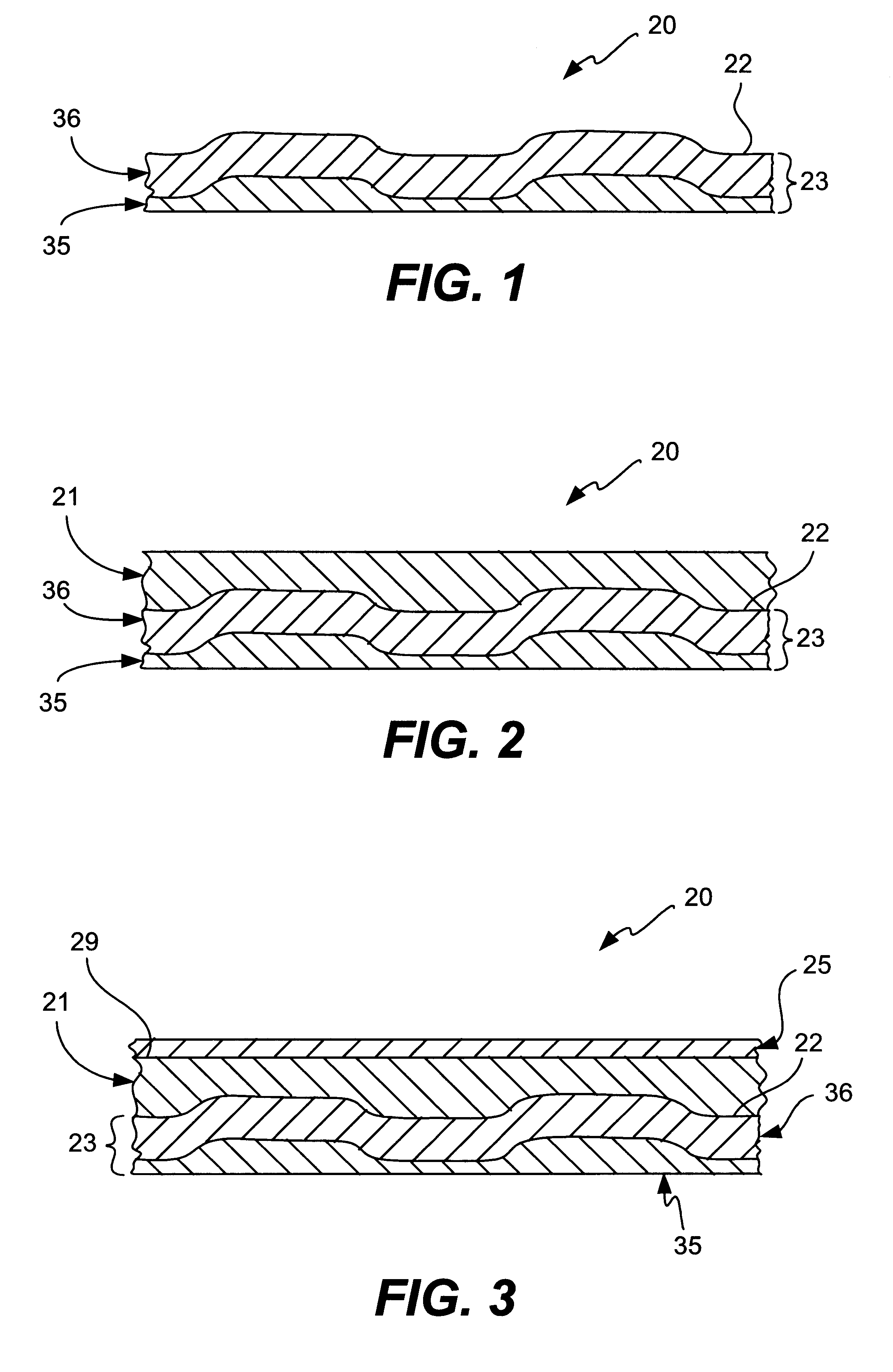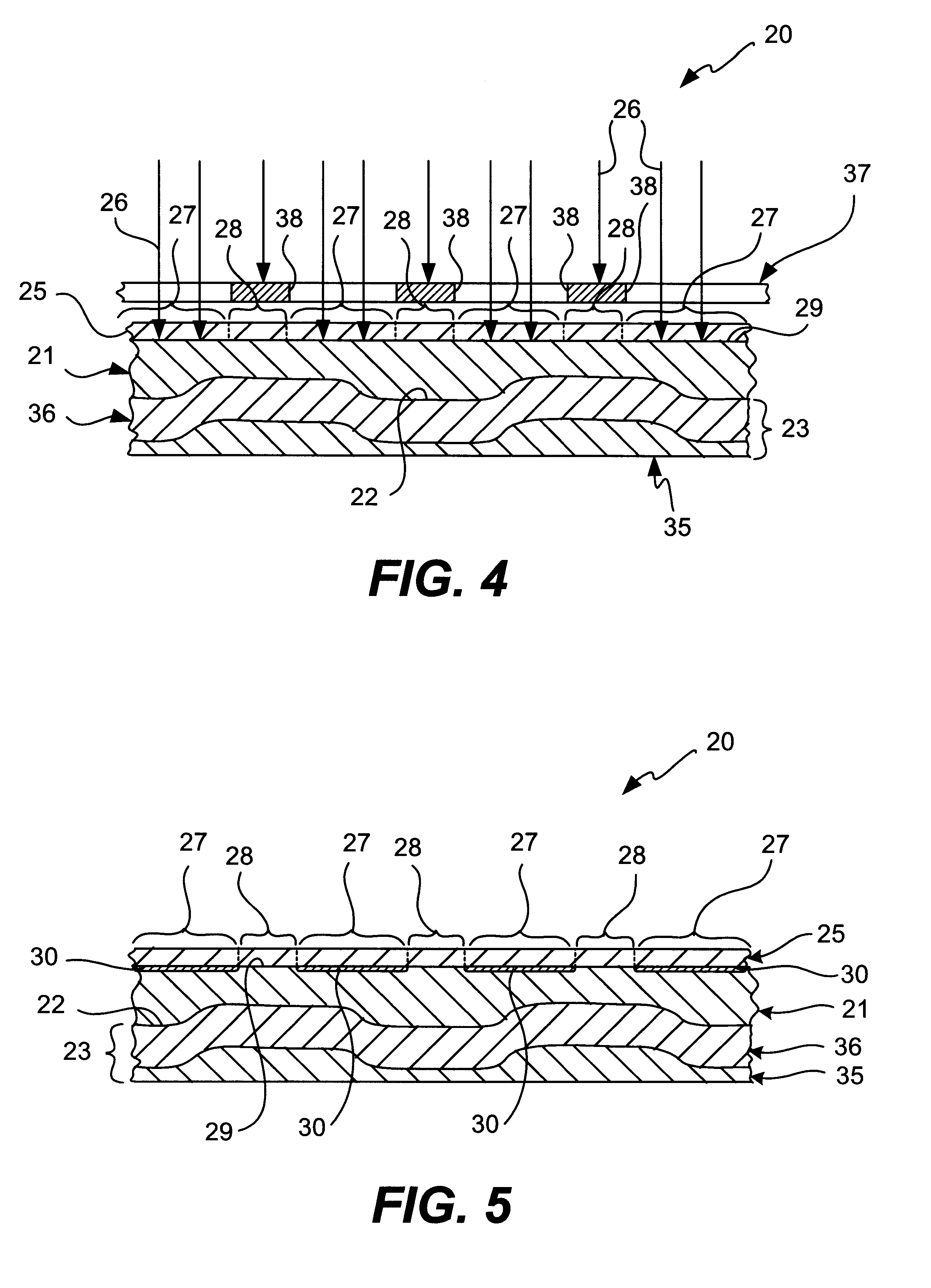Top surface imaging technique using a topcoat delivery system
a topcoat and imaging technology, applied in the field of topcoat delivery system, can solve the problems of reduced resolution of projected images, special focus problems of dof lenses, and difficult ic fabrication
- Summary
- Abstract
- Description
- Claims
- Application Information
AI Technical Summary
Benefits of technology
Problems solved by technology
Method used
Image
Examples
Embodiment Construction
While the present invention will be described with reference to a few specific embodiments, the description is illustrative of the invention and is not to be construed as limiting the invention. Various modifications to the present invention can be made to the preferred embodiments by those skilled in the art without departing from the true spirit and scope of the invention as defined by the appended claims. It will be noted here that for a better understanding, like components are designated by like reference numerals throughout the various figures.
Attention is now directed to FIGS. 1-9 where a method for manufacturing a device, generally designated 20, is provided including the steps of: depositing an underlayer 21 on a first surface 22 of a substrate assembly 23 comprising a first resist material being substantially photoacid generator-free and including an acid liable polymer group (FIG. 2); and depositing a topcoat layer 25 on the deposited underlayer 21 comprising a second res...
PUM
| Property | Measurement | Unit |
|---|---|---|
| wavelength | aaaaa | aaaaa |
| temperatures | aaaaa | aaaaa |
| temperatures | aaaaa | aaaaa |
Abstract
Description
Claims
Application Information
 Login to View More
Login to View More - R&D
- Intellectual Property
- Life Sciences
- Materials
- Tech Scout
- Unparalleled Data Quality
- Higher Quality Content
- 60% Fewer Hallucinations
Browse by: Latest US Patents, China's latest patents, Technical Efficacy Thesaurus, Application Domain, Technology Topic, Popular Technical Reports.
© 2025 PatSnap. All rights reserved.Legal|Privacy policy|Modern Slavery Act Transparency Statement|Sitemap|About US| Contact US: help@patsnap.com



